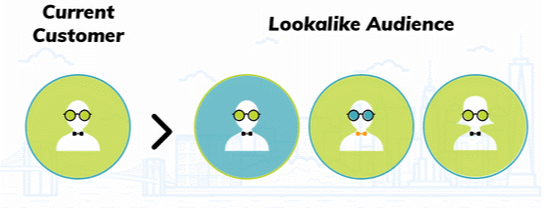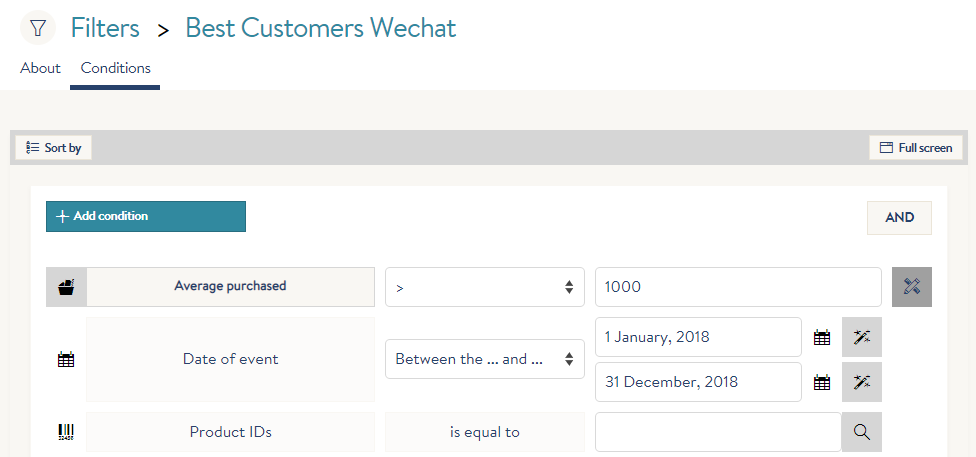WeChat Lookalike targeting: 20% higher advertising ROI based on who’s already purchasing from you.



Romain Henriot
Catégorie : Mobile Wallets
Focusing your WeChat targeting on location, interests, and demographics isn’t enough to run high-ROI campaigns in an increasingly competitive Chinese environment. Tencent is finally improving their advertising options: they rolled out last year Lookalike audience targeting, a feature Facebook has been offering since 2013. According to digital performance agency Bamboo, the majority of your Facebook budget should go to Lookalike audiences, which consistently show a higher click-through rate. Is it the same with WeChat? How does WeChat Lookalike compare to Facebook’s?
Splio’s technology enables marketers to identify and bind customer data on all channels on WeChat in order to help them reduce and optimize acquisition budgets.
Lookalike targeting uses a known “high quality” population – typically existing customers – as a basis for advertisement targeting. Instead of fixed arbitrary criteria such as gender, location, age, education etc. An algorithm analyses this seed population and builds a target audience of similar people by finding common criteria between their profiles. Lookalike has the following advantages over criteria or “tag” based targeting:

BUT: like any algorithm, what goes in affects what goes out. The higher the value of the profiles you feed the algorithm, the better the lookalike audience will perform. The highest ROI will be using you best customers as a basis. You can use a CRM platform like Splio to extract the profiles of your best customers matched with a WeChat profile and use them as a seed population. More on that below.
WeChat’s case study of Lookalike targeting for Education First shows a customer acquisition cost lowered by 22%. This is further confirmed by Lu Jin, BD Manager from Digital Agency Westwin: “Lookalike consistently shows higher ROI than regular targeting, we typically see a 20% performance increase and recommend using it if you have sufficient basis for a seed population.”
While the two interfaces look very similar, the biggest differences with Facebook targeting are
The Lookalike expansion interfaces look very similar. WeChat use absolute population size increments, and Facebook a proportion of a country’s Facebook population.
While you could use WeChat followers or people clicking on your ads as a seed basis for Lookalike targeting, using existing customers show the highest efficiency. In their Education First case study, Tencent used existing clients, and for a reason. We recommend to target customers bound on WeChat: since WeChat will match only users across the Tencent universe, you need to use phone numbers of customers that you have identified on WeChat (as followers, Mini Program users etc.) to maximize match of the seeds with actual WeChat user profiles. Splio’s Omnichannel Marketing Platform helps marketers identify and distinguish customers among followers to order to personalize engagement with customers and optimize acquisition strategy:

Top: creating a segment of your top customers matched on WeChat based on total purchases. Bottom: export the segment result database as a CSV file, ready to use for a lookalike targeting
To be noted: you can also use directly segmented WeChat IDs for targeting (OpenIDs, UnionIDs), although this is not offered on the advertising backend at the moment: you need to connect directly with the Tencent team or one of their accredited agency for such a targeting (they minimal budget required is usually higher than when using directly the advertising backend).
But while your Chinese customer base can be very large, what should you prioritize? Based on our experience running thousands of customer retention campaigns, here are the top sources you should consider:
With a 20% higher ROI on advertisement, lookalike targeting is to be considered if you spend above 200 to 500 thousand RMB on WeChat ads to justify for the overhead of segmenting and matching your customer base. It works best for brands having:
WeChat Lookalike is quite similar to Facebook’s feature, but with a higher barrier to entry (budget and size of the seed population), and a higher focus on offline data as a source. And just like Facebook, the highest ROI is when using profiles of your actual customers as a basis for targeting. Splio helps brand marketers to segment their most valuable customers matched with a WeChat profile and have a maximal ROI on your WeChat advertisement.
{{cta(‘b4eb6493-097f-45d3-a9aa-d6c36ec70e7f’,’justifycenter’)}}
To get regular insights on how to develop and strengthen your Loyalty strategy in China, scan the QR code to follow us on WeChat!
Sommaire